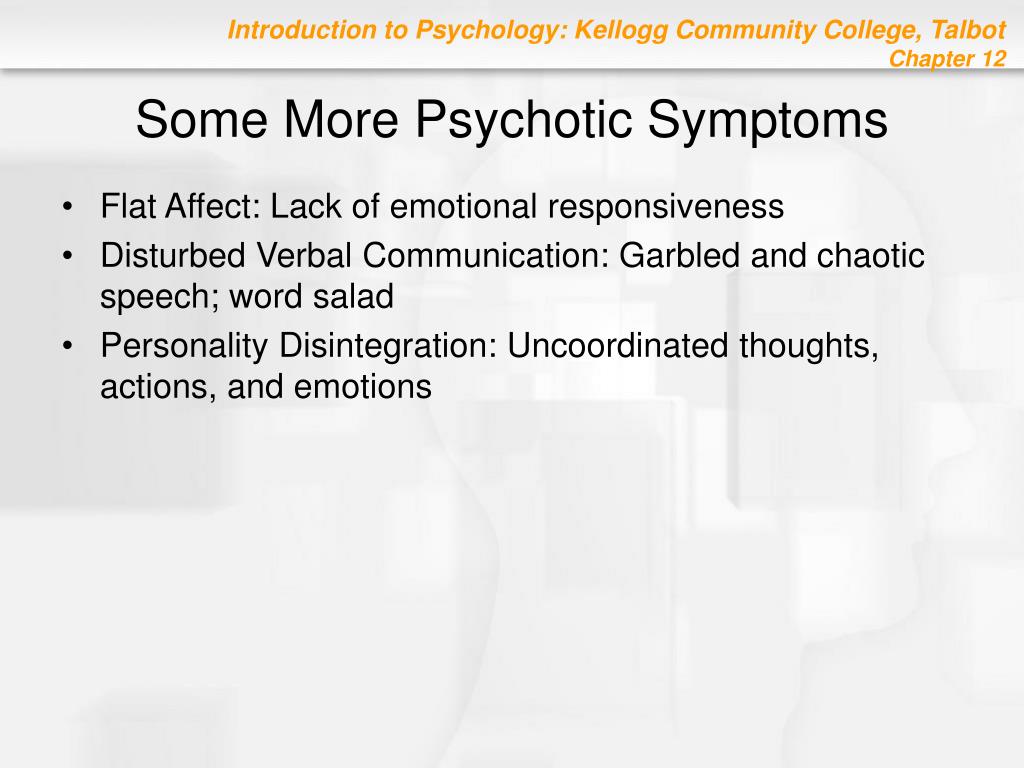

Researchers believe that a combination of genetics, brain chemistry and environment contributes to development of the disorder. It's not known what causes childhood schizophrenia, but it's thought that it develops in the same way as adult schizophrenia does. Or if you think you can do so safely, take your child to the nearest hospital emergency room. Call 911 or your local emergency number immediately. If you have a child or teen who is in danger of attempting suicide or has made a suicide attempt, make sure someone stays with him or her. Suicidal thoughts and behavior are common among people with schizophrenia. Seek medical care as soon as possible if you have concerns about your child's behavior or development. Your child's teacher or other school staff may alert you to changes in your child's behavior. You may be afraid of rushing to conclusions that label your child with a mental illness.
#Psychotic break symptoms how to
It can be difficult to know how to handle vague behavioral changes in your child. As thoughts become more disorganized, there's often a "break from reality" (psychosis) frequently requiring hospitalization and treatment with medication. Eventually, your child may develop the symptoms of psychosis, including hallucinations, delusions and difficulty organizing thoughts. Some early signs can be mistaken for typical development during early teen years, or they could be symptoms of other mental or physical conditions.Īs time goes on, signs may become more severe and more noticeable. Early signs and symptoms may be so vague that you can't recognize what's wrong. When childhood schizophrenia begins early in life, symptoms may build up gradually. More likely to have visual hallucinations.Also, the person may avoid people and activities or lack the ability to experience pleasure.Ĭompared with schizophrenia symptoms in adults, children and teens may be: For example, the person may neglect personal hygiene or appear to lack emotion - doesn't make eye contact, doesn't change facial expressions, speaks in a monotone, or doesn't add hand or head movements that normally occur when speaking. This refers to reduced or lack of ability to function normally. Behavior can include resistance to instructions, inappropriate or bizarre posture, a complete lack of response, or useless and excessive movement. Behavior is not focused on a goal, which makes it hard to do tasks. This may show in several ways, from childlike silliness to unpredictable agitation. Extremely disorganized or abnormal motor behavior.Rarely, speech may include putting together meaningless words that can't be understood, sometimes known as word salad. Effective communication can be impaired, and answers to questions may be partially or completely unrelated. Disorganized thinking is inferred from disorganized speech. Hallucinations can be in any of the senses, but hearing voices is the most common hallucination.
#Psychotic break symptoms full
Yet for the person with schizophrenia, hallucinations have the full force and impact of a normal experience.

These usually involve seeing or hearing things that don't exist. Delusions occur in most people with schizophrenia. For example, you think that you're being harmed or harassed that certain gestures or comments are directed at you that you have exceptional ability or fame that another person is in love with you or that a major catastrophe is about to occur.

These are false beliefs that are not based in reality.


 0 kommentar(er)
0 kommentar(er)
